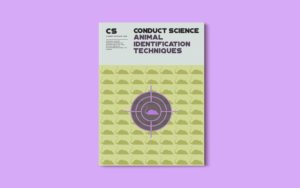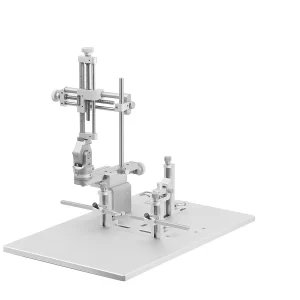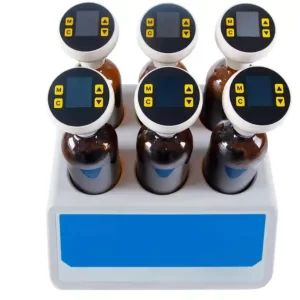Histochemistry is comprised of two words Histo & Chemistry, which means the chemistry of tissues. In the year 1800, histochemistry became a part of science and now it is one of the most widely used techniques to help scientists localize and visualize cellular components, tissues, and other living structures.[3] This technique uses different stains and indicators, which reacts with the cellular components, to develop tiny colored structures that could be easily observed under a microscope. Histochemistry involves the aspect of both Chemistry and Histology.
Do you know? In the early phase of Histochemistry, it was limited to looking only into dead cells but with the advancement of research, this field has expanded its horizon to see what’s inside the living tissues or cells! [1] |
Techniques/ Methods used in Histochemistry:
There are different techniques used to stain the cells or tissue to observe the colored structures under the microscope. However, cells can’t be directly stained. Before proceeding with the staining part, there are steps[7] involved in coloring the cell;
- Animal treatment and tissue processing
- Fixation of tissues and cells (chemical fixation and cryo-fixation)
- Embedding and sectioning
- Staining & observation of specimen by microscopy
Histochemical methods are based on the type of molecule needed to be studied or the structure to be observed. Some of the methods with their principles are explained below.
Perl’s reaction
This technique is based on the principle of the reaction of ferric ions present in the tissues, with ferrocyanide, which results in the formation of Prussian blue color.[2]
In this method, the section of the tissue or specimen is incubated with acid ferrocyanide and then stained with aqueous neutral red or nuclear fast red. Under the microscope, the blue part indicates iron, and background or nuclei is indicated by red and pink color.
Von Kossa technique
This is based on the principle of the reduction of silver nitrate by calcium phosphates, if they are present in the sample tissue or specimen was taken.[1]
In this method, the section is dipped in the solution of silver in the light until the calcium (if present) turns black. After this, the section is washed and stained first with a hypo solution and then washed and stained with nuclear fast red. Under the microscope, the black color indicates calcium, the red color indicates nuclei, and the cytoplasm is indicated by pink color.
Lipids staining
This involves the use of disparate Lysochromes (Lipid soluble dyes) like Sudan Black B, Nile red, and Oil Red O, etc. The dyes are selected depending on the type of lipid to be studied and observed by light or electron microscopic techniques.[3]
For example:
- Monarchy method uses Osmium Tetroxide to visualize (by electron microscopy) the fat droplets and triglycerides.
- Otan method uses Osmium Tetroxide to study the distribution of hydrophilic lipids.
- Nile blue is used to distinguish (using light microscopy) the distribution of phospholipids and free fatty acids.
- Oil Red O mainly stains neutral lipids, but at 60֯ C it also stains cholesterol and cholesteryl esters.
Nucleic acid staining
Various methods[7] that are involved in staining of Nucleic acids are as follows:
- Feulgen’s nuclear reaction: This is the most widely used method which involves the principle of hydrolysis of DNA by HCl which exposes the deoxyriboses. Then Fuchsine reacts with the aldehyde group which colors the DNA red.
- S-Bromo-2′ -Deoxyuridine Method: In this method, BrdU is incorporated in DNA and for its visualization, BrdU-specific monoclonal antibodies are used. This method is mainly used for the visualization of DNA in cultured cells, smears, and chromosomal spreads.
- In-situ Hybridization: This method involves the melting of double-stranded nucleic acid and then hybridizing them with DNA or RNA probes having radioactive elements like 125I or 3H or non-radioactive elements like biotin for visualization of nucleic acid.
- RNA is mainly stained by using basic dyes such as Toluidine Blue and methylene blue.
- Dyes that are used to stain both DNA and RNA include, Methyl green pyronin stain which is just used to observe the presence of nucleic acid; and Acridine orange which stains DNA in yellow-green and RNA in red-orange color.
Protein staining
Illustration of proteins histochemically is only done when one or more amino acids are very high in their composition in the protein structure. But when the protein to be demonstrated is mixed with other proteins and is in less concentration, their demonstration is done by enzyme activity. Some proteins are identified either by their tissue location or physio-chemical properties.
There are two principles involved in the illustration of protein:
- Reaction with amino acids, which after covalent bonding with a dye, highlights the protein.
- Reaction of charged dyes with a net charge on the protein (either positive or negative)
Depending upon the type of amino acid to be demonstrated in the protein, there are various methods[3] involved, some of which are explained in the table below:
| Amino acid | Method | Application |
| Lysine | Oxidation by T-Schiff | For the demonstration of histones and globin proteins |
| Arginine | Naphthoquinone sulfonate method, Sakaguchi test | For the demonstration of granules in eosinophils and histone proteins. |
| Tryptophan | By dimethylaminobenzaldehyde (DMAB) followed by diazonium salt coupling | To demonstrate Proenzymes like trypsin and chymotrypsin etc. and also sections of fibrinogen. |
| Tyrosine | Diazotization coupling reaction, Millon’s method | ———— |
| Cysteine | Ferric-ferricyanide method and mercury orange | For the visualization of different proteins. |
- Basic proteins like histones, myoglobin, and ribosomal basic proteins are also stained and localized by staining with Anionic dyes.
Carbohydrates staining
The illustration of carbohydrates is done mainly by the Periodic acid Schiff (PAS) reaction. This reaction is based on the principle of oxidation of carbohydrates in tissues to give aldehyde group, which after reaction with Schiff’s reagent shows carbohydrates of tissue in purple color.[3] Carbohydrates that are stained by this method are Sulphomucins, Proteoglycan, Glycogen, Glycolipids, etc.
The other stains that are used for the carbohydrates staining process are alcian blue (which stains sulfomucin and acid glycoproteins), Ruthenium red (to color mucopolysaccharide), and Lectins (for the identification of glycoconjugates, mucin, etc.)
With the advancement of Histochemistry, in 1960, the Enzyme-histochemistry method was introduced in research and biomedical practices.
What is Enzyme-histochemistry?
Enzymes are proteins that catalyze reactions. They are specifically localized in certain organelles depending upon their function in the particular organelle, like catalase in peroxisome, mitochondria, and chloroplast; succinate dehydrogenase in mitochondria, etc.[6] Due to many pathological conditions, differences in the activity of enzymes and their distribution inside the cells occur which is demonstrated by this technique. This technique is a link between biochemistry, histology, and molecular pathology. It helps in the study of dose-dependent intoxication and the changes in the organism’s pathological condition over time.
Methods to study the enzyme histochemistry depend upon the class of enzyme.
For example:
Hydrolases – Metal Salt Method, Coupling Method
Oxidoreductase – Cerium Method, 3-amino-9-ethyl carbazole method
Implementation of Histochemistry techniques in Research and Biomedical practices
- Application of Perl’s reaction involves diagnostic studies, as in hemochromatosis (accumulation of ferric ions in the liver and pancreas) and hemosiderosis (accumulation of ferric ions in the liver, spleen, and lymph nodes).[1]
- Von Kossa method is used to examine the presence of calcium deposits during bone formation or in cyst fluids, ductal ectasia, and papillomatosis.[1]
- Lipid staining methods are used in the study of localization and distribution of different types of lipids in the cell and lipid accumulation-related disease.[2]
- The carbohydrate staining method is used during biopsies of tissues from the patient who is diagnosed with carbohydrate storage diseases like glycogen or glycosaminoglycan.[3]
- The Enzyme-histochemistry method is used to study the metabolic changes in the tissue of diseased patients; in the diagnostic of Hirschsprung disease; Biopsy analysis of muscle; and for the research in toxicology.[6]
Advancement in Histochemistry
Immunohistochemistry
This technique was first introduced in 1970 and is still an evolving technique. This is performed to demonstrate the localization of antigen-binding sites by labeling the antibodies. For this purpose, antigens or antibodies (like monoclonal or polyclonal) should be specifically purified and this is done by methods like antigen-affinity chromatography or the Hybridoma technique. To test the specificity of these antibodies, different techniques are used like ELISA, Immunoelectrophoresis, Western Blotting, etc.[3]
Labeling of antibodies is done by methods like fluorochrome conjugates (Fluorescein
Isothiocyanate (FITC)), enzyme conjugates (HRP and peroxidase-anti-peroxidase technique), colloidal gold conjugates, etc.[4]
Why Immunohistochemistry is required?
Immunochemistry plays a major role in the research field for the detailed study of undiagnosed diseases. Some significant applications[4] of immunohistochemistry include:
- Prediction of the stage, type, and origin of cancer.
- To predict whether the cancer is benign or malignant.
- In drug development, to test the specificity of the drug.
- For the confirmation of an infectious agent that is the cause of a particular disease, by using specific antibodies against the organism’s DNA or RNA.
- To predict the function of a particular gene for example, p53 role in apoptosis.
- In research to study the various neural disorders or brain disorders like, for the study of the deposition of β-amyloid protein.
-
Modern Labeling Techniques
With the advancement of labeling techniques, various methods are introduced that color the living cells with more contrast and specificity. Some of the methods[5] are explained below:
- Fluorescence and fluorophore: Fluorophores are detected when the photons are emitted at different wavelengths.
- Intrinsic labeling: The target is stained by the use of a fluorescent molecule which should have an intrinsic affinity for the target.
- Genetically encoded Fluorophores: This method involves the use of fluorophore molecules, which are confined in a protein shell called fluorescent protein, that forms chromophores when it reacts with oxygen.
- Affinity-based tag-ligand system: This uses genetically encoded or engineered tags, which fluoresce when bound with a specific ligand.
Conclusion
Histochemistry has become one of the essential parts of biomedical and pathological research for the diagnosis of many diseases including cancer and Alzheimer’s, as well as drug discovery. Further advancement in this field requires interdisciplinary approaches of scientists in the field of chemistry, biochemistry, and histology.
References
- A. G. Everson Pearse (1951). A Review of Modern Methods in Histochemistry. Journal of Clinical Pathology, 1794-1878. doi: 10.1136/jcp.4.1.1
- C. Pellicciari (2014). Impact of Histochemistry on Biomedical Research: Looking Through the Articles Published in a Long-established Histochemical Journal. European journal of histochemistry, 58 (4), 2474. doi: 10.4081/ejh.2014.2474
- Hans Lyon (1991). Theory and Strategy in Histochemistry: A Guide to the Selection and Understanding of Techniques (1st ed.), Berlin, Springer.
- Jayapradha Duraiyan, Rajeshwar Govindarajan, Karunakaran Kaliyappan, and Murugesan Palanisamy (2012). Applications of immunohistochemistry. Journal of Pharmacy and BioAllied Sciences, 4(2), 307-309. doi: 10.4103/0975-7406.100281
- Luke D. Lavis (2011). Histochemistry: Live and in Color. Journal of Histochemistry and Cytochemistry 59(2), 139-145. doi: 10.1369/0022155410395760
- Meier-Ruge WA, Bruder E (2008), Current concepts of enzyme histochemistry in modern pathology. Journal of Pharmacy and BioAllied Sciences 75(4), 233-243. doi: 10.1159/000132384
- Tetsuji Nagata (2008). Histochemistry, General and Special. Annual Review of Biomedical Sciences 10, 105-159. doi: https://doi.org/10.5016/1806-8774.2008.v10p105












